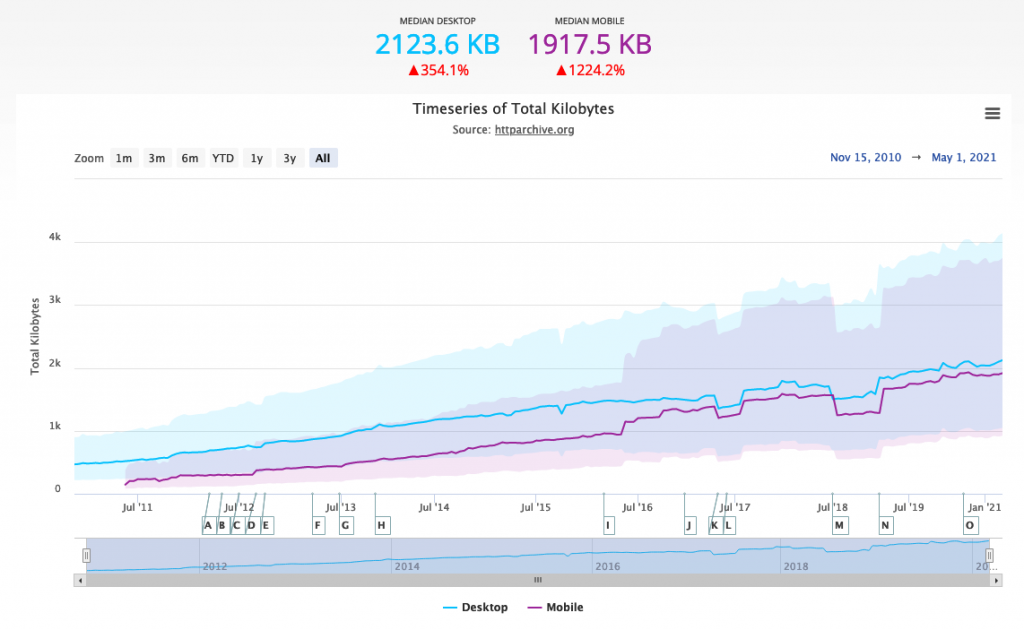A week has passed since Google started rolling out its Page Experience update. The big, scary one that is supposed to hurt all the slow websites, the Slowmageddon. And to add some irony to the whole thing, Google is really taking its time rolling this one out, it’s expected to last until the end of August.
We already wrote about how you can optimize your WordPress website for Core Web Vitals, and we also can help you improve your Core Web Vitals scores, but let’s have a look at why you should even bother with Core Web Vitals optimization.
Speed, and specifically Core Web Vitals scores as a ranking signal are not that heavy compared to everything else – relevance of the content, site authority, etc. Which leads to this question:
Why Even Bother with Core Web Vitals?
To really understand what Google is trying to do with Page Experience update, you need to take a step back and realize that what you may think of your users are actually Google’s users. I discussed this with Jason Barnard in a recent No Hacks Marketing podcast episode where we covered strategic approach to SEO.
Wait, what? It’s simple, a person uses Google to find information about something, let’s say Core Web Vitals. So, they are using Google to find that out, Google then sends them shows them a list of pages that:
- Have good content on Core Web Vitals and are considered to be an authority on the topic
- Satisfy Page Experience demands (Core Web Vitals, mobile-friendliness, safe-browsing, HTTPS, no intrusive interstitials)
In that order. Google cares more about providing relevant search results than it does about speed of the pages. Simply put, your super-fast page will not outrank a slow one if their content is better.
This is because Google would rather put its users on a slow train that will take them where they want to go than a bullet train to a place they had no interest visiting. If you are only interested in optimizing your website’s Core Web Vitals not to make Google’s ranking algorithm mad, you’re probably over-sweating this. Unless your scores are really, really bad.
Sidenote: Even if Google’s algorithm sees performance as a tie-breaker, having a well performing page will dramatically help Googlebot crawl your website more efficiently. More on this below.
What About the Real Users and Core Web Vitals?
If you’re anyone but Google, this is what it’s all about. Over the years pages have gotten fatter and fatter with median page weight on desktop increasing by 354% on desktop and 1224% on mobile, as this report from HTTP Archive shows:

Yes, users are on faster networks and more powerful devices, but that is a lame excuse to stuff everything down their browsers. If you think of this Google update more like an intervention and less like one of those traditional core updates, it is easy to use it as an excuse to invest in a better experience for your audience.
Let’s look at each Core Web Vital and how having a good score would help your users.
Largest Contentful Paint
No real user cares about how long it takes for the page to fully load, what your server response time is, or how many total requests the page makes. You should, but not your users. What real users care about is how long it takes to show them relevant content. Google says the largest contentful paint element (fancy speak for largest element above the fold) needs to be displayed in 2.5 seconds or less.
It’s easy to see why a user would see a page that takes long to display anything meaningful as non-responsive, go back to Google and click another link. Don’t stop at 2.5 seconds though, faster is better, always.
First Input Delay
Even if the content is displayed in no time, it still needs to respond to user interactions. Otherwise it’s like a taxi that arrives in 30 seconds but then it takes 10 minutes for it to get going. No one wants that. The page needs to be able to respond to this first input in 100ms or less, otherwise it enters “something’s not right” territory. ‘
Cumulative Layout Shift
Every human being is unique, but we all have one thing in common – we hate jumpy layouts. There’s not a single reason for this to happen, if you are in charge for what your website is loading, you can anticipate how much space it will need.
Core Web Vitals – Meant to Help Us All?
If you ignore the fact that Google exists and is trying to make people optimize their websites so it can save money crawling and send its users to experiences that don’t suck – a huge if – then what Page Experience update and Core Web Vitals become is a tool that will get most of us to care about the experiences we provide to our audiences, that alone makes it one of the most exciting things to come out of Google’s kitchen in a long time.